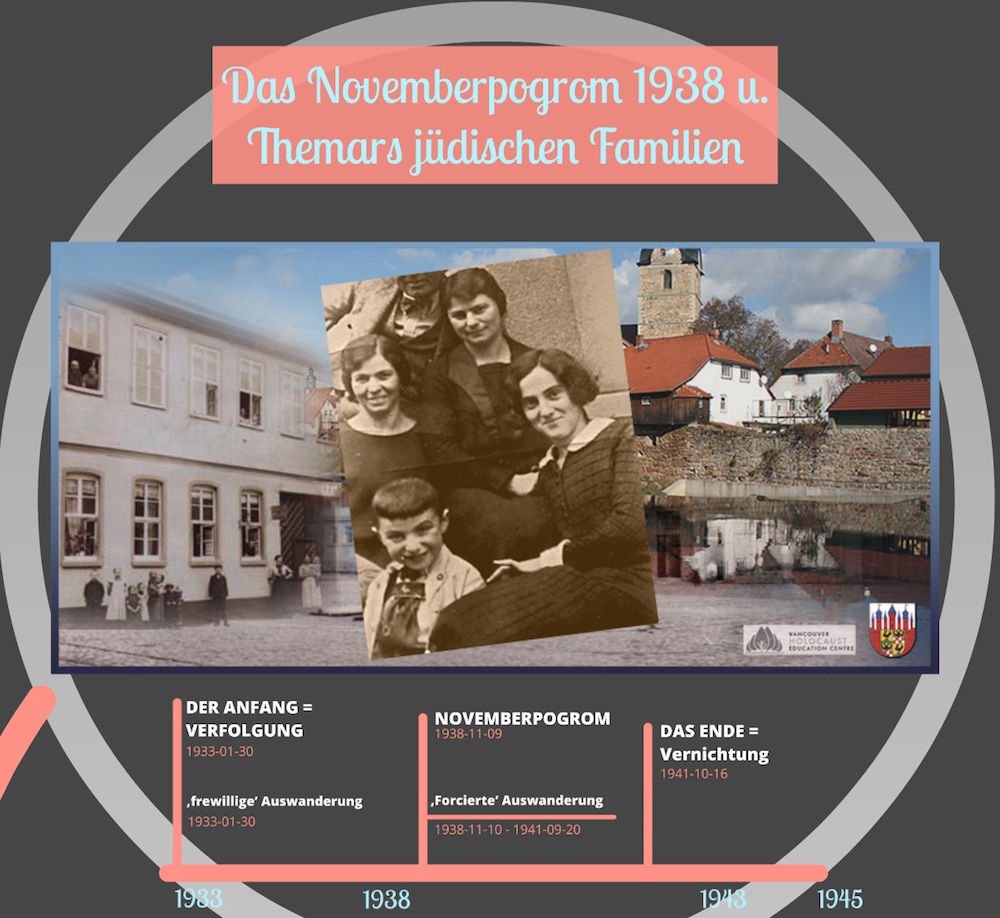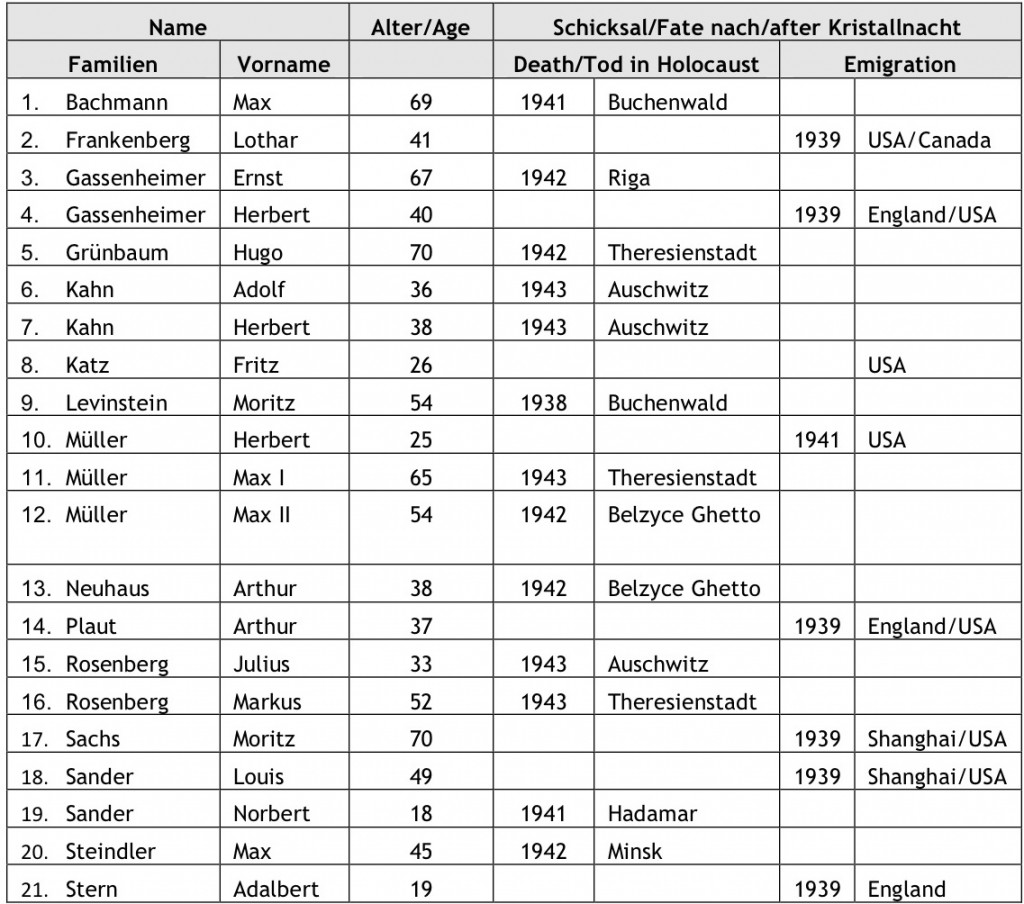
There were twenty (20) Jewish men in Themar in November 1938; eighteen (18) were rounded up in the Kristallnacht pogrom. Ernst Gassenheimer (b. 1870) was in hospital recovering from surgery and he was allowed to remain there; Moritz Levinstein was in Meiningen and was rounded up with the men of Meiningen who included Paul Rosengarten. Adalbert Stern (b. 1917) was hiding out, as it were, by riding the bus, not the train, and then seeking refuge with the parents of friends in the region; we do not know where Arthur Neuhaus (b.1879) was. No women were apprehended.
Among those arrested were Max Müller II (b. 1884), who lived with his wife, Clara, on the northern part of the city at Meininger Strasse 17, and his oldest son, Herbert, 24 years old, who was living with his wife, Flora (née Wolf) at the Mayer/Wolf home at Schulstrasse 9. Fifty years later, in 1988, Herbert Müller recalled his experience in a speech to his synagogue in Jamaica, New York:
“On or about Nov. 7th 1938, a member of the German Foreign service, Ernst von Rath, was shot by a young Jewish man. We knew instantly that there would be major repercussions and we were warned to act quickly. So on November 7th we removed the Sifre Torahs and books from the Synagogue and buried them in the backyard of the Synagogue.”
During the night of Nov. 9-10 at about 2.30 a.m., we awoke from the noise of broken doors and windows. Half a dozen Stormtroopers entered and told me: ‘You are arrested, get dressed and come along.’ On Nov. 10 1938, trucks carried us to Buchenwald with no food or water. There was no communication to our families. Flora [Herbert’s wife] did not know till the following day [November 11, 1938] if only I was arrested or all males in the community. I was Schutzhaeftling #20974/Block 50.”
The intent behind the Kristallnachtpogrom was to increase the pressure on German and Austrian Jews to emigrate although they would make the process as difficult and expensive as possible. Thus, with the help of Dr. Ernst Ledermann, who wrote letters on their behalf to the Gestapo, nine of the Themar Jews were released from Buchenwald by the beginning of December. Sadly, those still in Buchenwald on December 1, 1938 were four WWI veterans, including Max Müller II. The final Themarens were released late in January; Moritz Levinstein, the beloved Lehrer of Themar, did not return alive from the brutal ordeal.
Much clearer now about Nazi intentions, most of these men made plans to leave Germany. Herbert Müller, his wife, Flora Müller (née Wolf), and his mother-in-law, Frieda Wolf (née Mayer), escaped, travelling from Berlin in May 1941 in a sealed train to Lisbon and then on to the United States. They were the last of the Müller family to leave; Herbert’s younger brothers, Meinhold and Willi, had left for Sweden and Palestine in 1938 before Kristallnacht. Their mother and father, Clara Müller (née Nussbaum) and Max Müller II, were deported to Belzyce Ghetto in May 1942.
Of the other Jewish men in Themar after November 1938, six others succeeded in emigrating; But even as some left, the murders of Themar Jews continued: In February 1941, Norbert Sander was murdered at the Hadamar Killing Facility in the Euthanasia Program because he suffered from Epilepsy. In November 1941, Max Bachmann was rearrested on 10 November 1941 not wearing the yellow Jewish Star prominently on his coat and initially taken to Buchenwald; in March 1942, he was taken to the Bernburg killing facility and murdered immediately in the experimental gassing program taking place there. Two months later, on 10 May 1942, Max Müller II and Arthur Neuhaus were deported to Belzyce Ghetto and in September 1942, the Theresienstadt Ghetto. The three men — Ernst Gassenheimer, Adolf Kahn, and Herbert Kahn, who had migrated in 1939 to other centres within Germany were also deported: Ernst Gassenheimer with daughter-in-law Edith Gassenheimer (née Schettmar) from Gelsenkirchen to Riga in January 1942; Adolf Kahn and his cousin Herbert Kahn from Berlin to Auschwitz in 1943. None survived.
Kristallnacht and the Jewish Men of Themar

29 November 1938: The International Herald Tribune reported that “the total registration for American visas under the German quota of the Immigration Law has swollen to approximately 160,000, while applications for places on the waiting lists are reaching the Berlin Consulate General at the rate of nearly 500 per day.”

